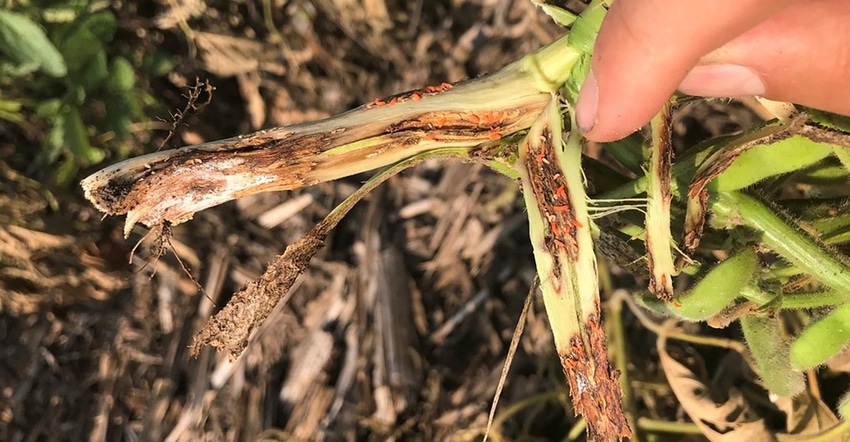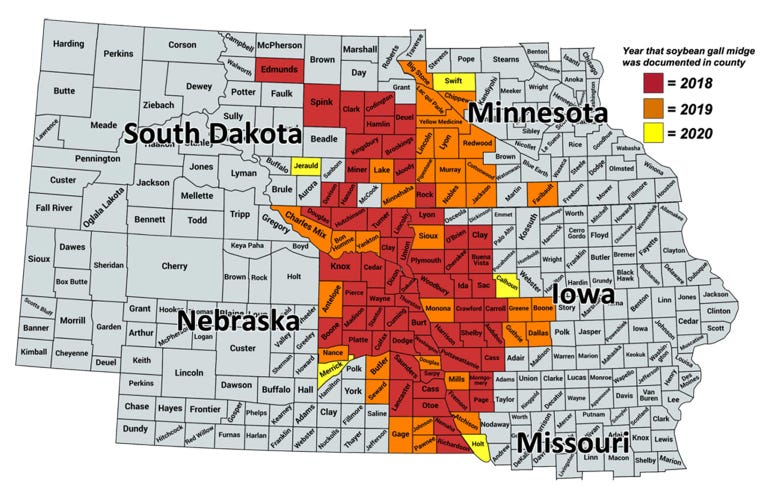August 19, 2020

It’s small, legless and maggot-like, and it's causing damage to northwest Missouri soybean fields.
The soybean gall midge is once again showing up in the state, says Kevin Rice, University of Missouri Extension field crop entomologist. The midge is making its presence known now in two Missouri counties. This pest feeds on soybean stems and causes yield loss.
Rice reports that the midge was found last year in Atchison County and this year in Holt County. Both counties sit in Missouri’s far northwest corner.
The midge, a voracious feeder on soybean stems, spread widely through Nebraska, Iowa and South Dakota in 2018. The next year, the Soybean Gall Midge Alert Network was formed to monitor soybean gall midge emergence across 27 sites in four states — Nebraska, South Dakota, Minnesota and Iowa.
However, with the appearance of soybean gall midge in northwest Missouri, the group is tracking its movement south as well.

MU Extension agronomists and entomologists are scouting Missouri fields to determine the distribution of this new pest. Rice encourages anyone who suspects the soybean gall midge is present in fields to contact their local MU Extension agronomist.
How to spot soybean gall midge
Soybean gall midge larvae feed internally in the base of soybean stems. It starts as a dark discoloration at the stem bases. Feeding larvae disrupt phloem and xylem transport, and it results in yield loss. In large numbers, it causes stems to become brittle and break at the base, Rice says.
Feeding occurs primarily along field edges. Rice urges farmers to scout along field borders when soybean are at V2 growth stage. Look for darkening at the stems. Remove discolored stems, peel back the epidermis and look for white or bright orange larvae.
The University of Nebraska produced a video to help farmers looking for soybean gall midge in their fields.
Treatment of soybean pest
Rice says there are no management recommendations at this time because soybean gall midge is a newly discovered species. Seed treatments do not appear to be effective since larvae are active after V2 growth stage.
However, early research from the University of Nebraska shows a yield response if a foliar insecticide (pyrethroid) is applied two days before adult emergence and up to 10 days after first emergence. Farmers should note that this response was found on a field planted with soybeans the previous year.
Nebraska researchers also found that soybean gall midge egg-laying appears to be limited to plants that are at about the V3 stage and later, as they may need natural fissures (cracks) that form at the base of the stem. Insecticide applications should be delayed until plants are susceptible to gall midge.
Farmers can find more information at soybeanresearchinfo.com.
Source: The University of Missouri and the University of Nebraska, which are solely responsible for the information provided and is wholly owned by the source. Informa Business Media and all its subsidiaries are not responsible for any of the content contained in this information asset.
You May Also Like




